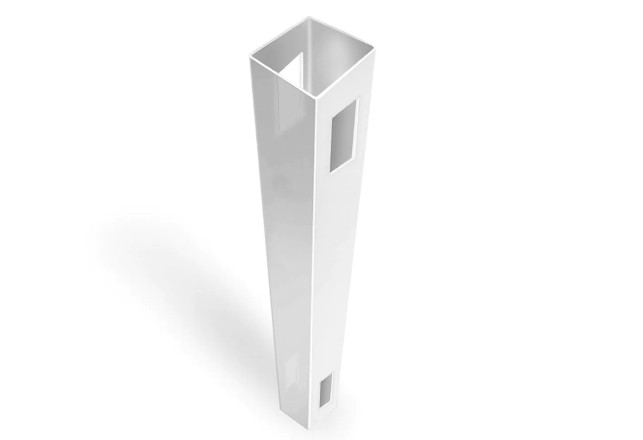
Why Are Vinyl Fence Posts Routered, and How Does Fence Layout Affect This?
If you’re new to the world of vinyl fencing, you might not realize exactly how this type of fence is installed or how your fence layout might affect both the installation and the price of your fence.
In this article, let’s take a closer look at why vinyl fence posts need to have routered holes and how your fence layout will affect this part of the manufacture and installation of your fence.
Why Are Vinyl Fence Posts Routered?
The first thing we need to discuss when it comes to routered vinyl fence posts is why it’s done.
The answer is simple: because of the way vinyl fences are installed.
When your vinyl fence installer installs your fence, they will slip the top and bottom rails of the fence panel into these holes, which gives them a sturdy frame to support the fence boards.
However, vinyl fence posts are usually sold without any holes by the manufacturer. This is done because there are several different vinyl fence designs and different types of vinyl fence rails, so they can’t possibly stock every possible variation and post design.
How Are Vinyl Fence Posts Routered?
The next thing you might be wondering about vinyl fence posts is how the holes are routered into the posts.
There are a few ways this can be done, but whether it’s done offsite on a larger router or on-site using a portable unit, the company that is preparing the posts will use a template to ensure that the holes are in exactly the right place.
Some fence companies router their own vinyl posts, but others purchase them with ready-prepared holes from a supplier or distributor. An accurate fence layout is often even more important when this is the case, because if the posts aren’t prepared correctly, it could cost more and take longer to complete your fence.
How Does Your Fence Layout Affect Vinyl Fence Posts?
Because vinyl fence posts need to be routered to accommodate the top and bottom rails of the fence, different posts need to have different hole configurations.
An end post, for instance, will have holes on one face of the post only. A line post will have holes on opposite faces, and corner posts will have holes on adjacent faces.
This affects the labour to manufacture and prepare the fence posts for installation, but your fence post layout can also affect the number of posts you need to have, as well as other aspects of the materials and labour to install your fence.
We’ve prepared two fence layout drawings. Both are based on 80 linear feet of vinyl fence, with fence posts at 8-foot centers.
In the first sketch, seen below, you can see that the fence has two end posts and 9 line posts, or a total of 11 posts.

In the second sketch below, which is a U shape with two corners, there are two corners, two ends and 8 line posts. This means that even though the fence length is the same, there is an additional post required.

This is the simplest way to illustrate why complex fence lines usually require more material and labour, even if they are the same length, and is a great example of why a fence company is unlikely to give you a price per linear foot for vinyl fence or any other kind of fence for that matter.
Make Sure You Get the Right Vinyl Fence Posts
Now that you know why your vinyl fence layout is so important, it’s easy to see how you can ensure you get the right number of posts with the right routered holes and that you don’t have any surprise price increases on your project!
Always ensure that any fence contractor who is quoting a vinyl fence project visits your site and understands exactly what your fence line will look like. This helps to ensure you get accurate pricing and that the finished fence looks great.


